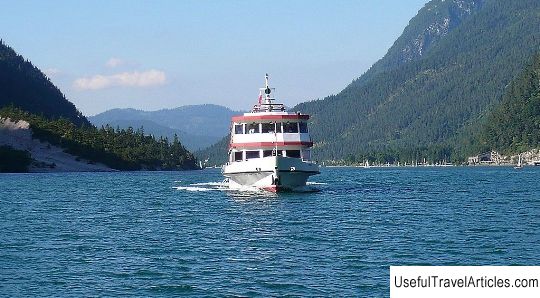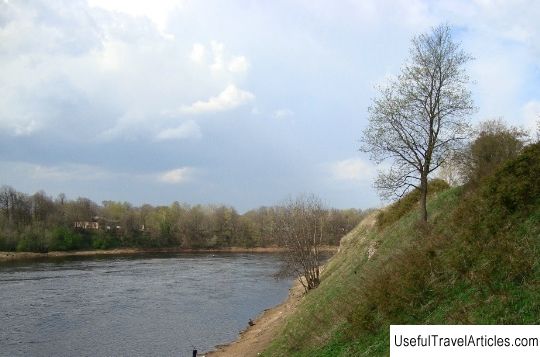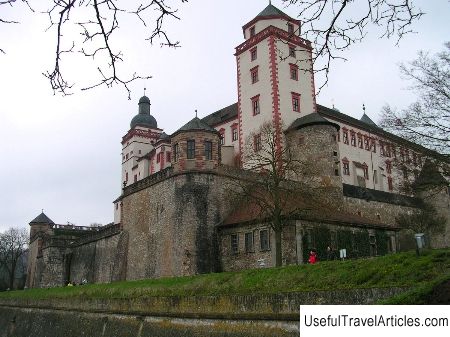Fortress Korela description and photo - Russia - Leningrad region: Priozersk
Rating: 8,2/10 (345 votes) 
Korela fortress description and photos - Russia - Leningrad region: Priozersk. Detailed information about the attraction. Description, photos and a map showing the nearest significant objects. Photo and descriptionOne of the most important roles in the history of the Karelian Isthmus was played by the Korela fortress. The famous stone fortress is located on the banks of the Vuoksa River in the city of Priozersk, Leningrad Region. Today the Korela fortress, which occupies the small island of Vuoksy, is a historical museum of local lore called “Korela Fortress.” The first mention of the fortress dates back to 1295. It is believed that in medieval times the stone fortress was the most northwestern settlement in all of Russia. The foundation of the fortress took place in the late 13th - early 14th centuries by the inhabitants of Novgorod on one of the islands of the Vuoksa River or, as it was called at the time, Uzerve, for the purpose of protecting the northern and western parts of the republic from Swedish raids. The original walls of the fortress were made of wood, but after 50 years they burned down as a result of a strong fire in 1310. According to the chronicles of Abraham, during the restoration of the fortress after a devastating fire in 1364, it was decided to erect the first stone building under her, for the construction of which he was responsible mayor Jacob. For a rather long period of time, it was believed that the stone tower, which was presented as a round one according to the plan, has survived to this day. But this opinion was refuted by A.N. Kirpichnikov, who during the 1970s carried out excavations in these places. Studies have shown that the alleged tower is a building built in Swedish times, and dates from the second half of the 16th century. Since the 1330s, Korela fortress was under the control of the Lithuanian princes Patrikei and Narimunta. In 1580, when the Livonian War was violently proceeding, the dilapidated Detinets was conquered by the Swedes, who decided to build the fortress first. According to the Treaty of Tyavzin, concluded in 1595, Vasily Shuisky returned to Russia again and promised a fortress, as well as the county of Delagardie as a gift for helping to pacify the spreading Troubles. It is worth noting that the overwhelming part of the local population expressed indignation at the recognition of the drawn up treaty, as a result of which in 1610 the Swedish leadership subdued Korela with the help of force. On the Russian side, about five hundred archers and more than two thousand militias under the leadership of I.M. Pushkin stood up to protect the fortress. , Abramov V., Bezobrazov A. and Bishop Sylvester. Starting from the autumn of 1610 and ending in the spring of 1611, the siege of Korela by Swedish troops was carried out, which ended in a complete failure of the Russian army - the fortress passed into the hands of De la Gardie. From that moment until 1710, Korela remained in the possession of the opponents and wore the name of Koselholm. During the Northern War, namely in 1710, the object was recaptured, after which, in the continuation of the Russian-Swedish war (1808-1809), it completely lost its purpose. Engravings from the 17th-18th centuries depicted the Koselholm fortress as low, only 8 m high, and single-tower. In many drawings, it is presented as a two-tier, gate with fire-fired stoves. The thickness of the walls reached 4 meters, which indicates a developed system of fortification, which was still in its infancy at that time. It was this kind of fortress that was erected in those days in the Kingdom of Sweden. At the end of the 19th century, Kexholm was a provincial town and was related to the Principality of Finland. At that time, the city reached its highest point of development, having experienced an unprecedented economic growth through close cooperation with Russian and Finnish cities. A pulp mill and a sawmill operated in the city. In the spring of 1940 the city was taken over by the Red Army, but a year later it again passed to the Finns. In 1944, Kexholm again became part of Russian territory. In 1948, research work began on the excavation of an ancient fortress, as a result of which Kexholm was named Priozersk. At the end of the summer of 1960, large-scale work was begun on the restoration of Korela, and in 1962 the fortress turned into a local history museum. In the summer of July 25, 1988, the Kexholm coat of arms, dating back to 1788, was approved as the coat of arms of the city of Priozersk.             We also recommend reading Medina Meknes description and photos - Morocco: Meknes Topic: Fortress Korela description and photo - Russia - Leningrad region: Priozersk. |




